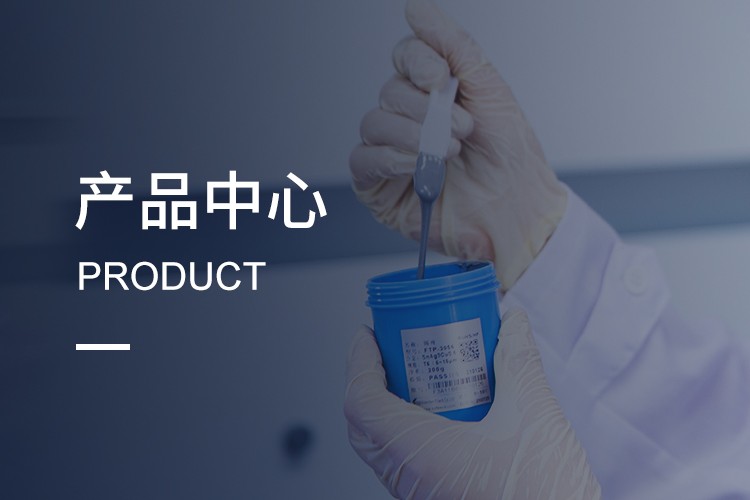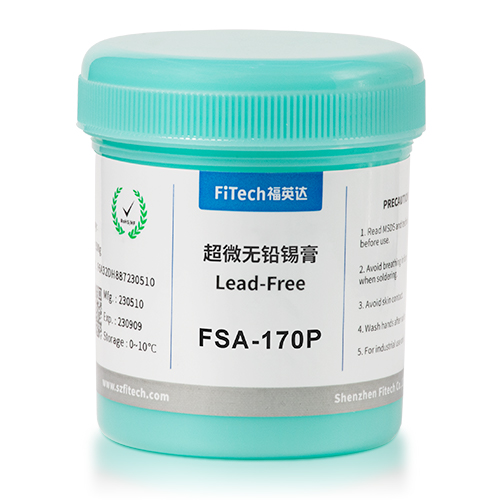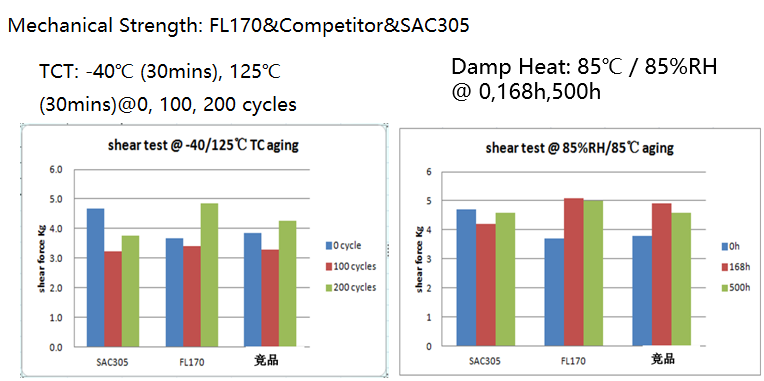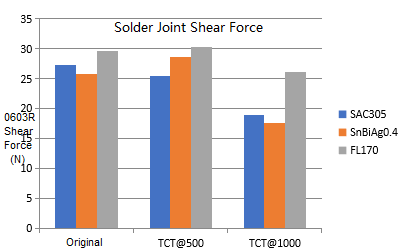Low-temperature epoxy solder paste has an alloy melting point lower than 180℃. The low-temperature epoxy solder paste is made of bismuth-based alloy. The existence of bismuth-rich layers easily causes a brittle fracture, poor dropping performance, and poor solderability. The low-temperature solder adhesive is composed of epoxy resin and other polymer materials to strengthen solder joints and improve drop resistance. Meanwhile, the excellent electrical insulation and protection of the resin glue can enhance the reliability of the packaging substrate. Low-temperature epoxy solder paste is very suitable for the packaging of thin substrates, non-heat-resistant devices, and high-reliability devices. Epoxy solder paste is a new type of packaging material.
FSA-170D
FSA-170P
FSA-574P
FSA-574D
FACA-138D
The main alloy component of FSA-170D series epoxy solder paste is Fitech’s FL170 low-temperature alloy solder powder (SnBiAgX). Fitech classifies FL170 solder powders into T4 to T7 based on particle sizes. The solder powder and epoxy-based flux are formulated into superior low-temperature high-reliability solder paste.
1. Excellent sphericity, uniform particle size, low oxygen content, and high strength;
2. Reduce solvent volatilization during the solidification process;
3. Halogen-free formula;
4. Reduce solder ball formation after soldering;
5. The solder joints are metallurgically connected, which are equivalent to the soldering effects of solder paste;
6. The soldering residue becomes thermosetting adhesive, which is attached around the solder joint to improve its strength and enhance the anti-corrosion and insulation performance;
7. No cleaning necessary;
8. It is suitable for reliable packaging of thin substrates and non-heat-resistant components.
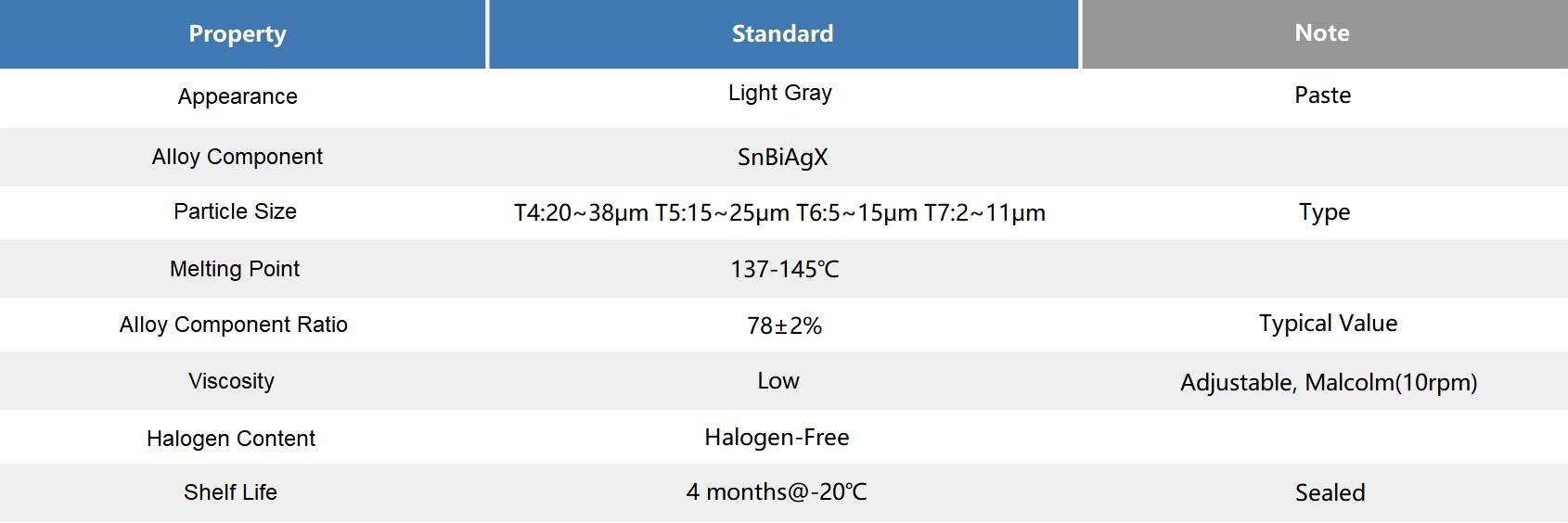

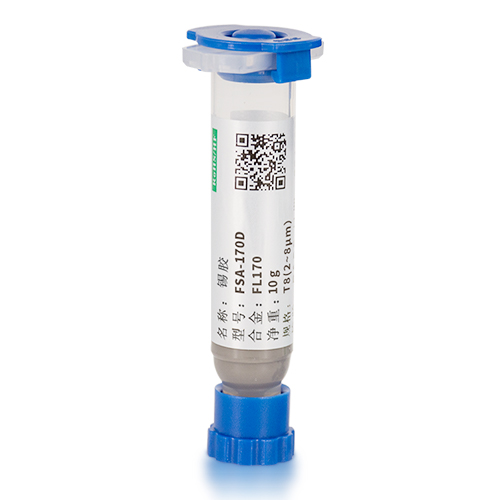
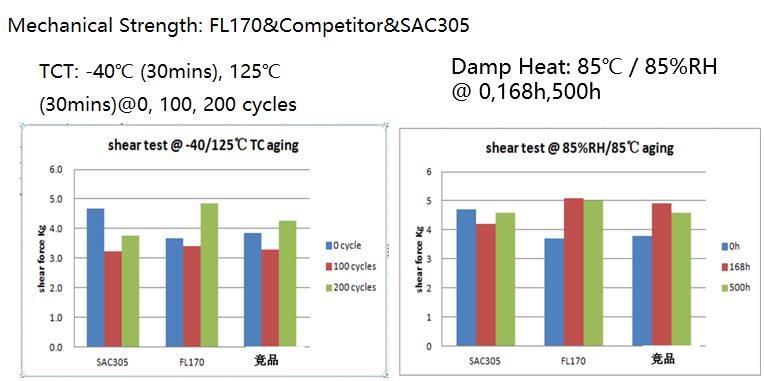
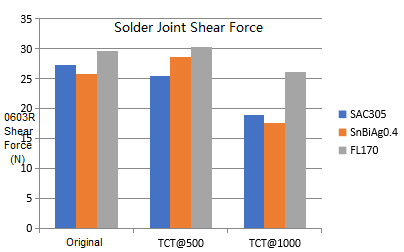
Warming Method: The sealed solder paste should rewarm to room temperature naturally; Rewarm no more than twice.
Warming Time: Rewarm 2 to 3 hours at room temperature. The actual time required to reach thermal equilibrium varies by vessel size.
Note: Do not open the bottle cap without sufficient rewarming or shorten the rewarming time by using heating equipment.
Operating Environment: The best operating temperature and humidity are 20-25°C and 40-60%RH, respectively. Reflow soldering in a nitrogen atmosphere is recommended.
Stencil Cleaning Solvent: Ether. Propylene glycol monomethyl ether (PM) is preferred.
FSA-170P (180P/200P) series low-temperature lead-free high reliable solder adhesive (epoxy solder paste) products are composed of low-temperature alloy solder powder and halogen-free flux. Only a tiny amount of solvent evaporates during the soldering and curing process. There is no solder ball generation after soldering. The solder powder melts and shrinks, and the solder joints are metallurgical connections, which are equivalent to the soldering effect of solder paste. FSA-170P epoxy solder paste is unnecessary to clean. The solder residue becomes thermosetting adhesive to reinforce the solder joint and enhance the anti-corrosion and insulation performance. The product is suitable for the reliable packaging of thin substrates and non-heat-resistance components.
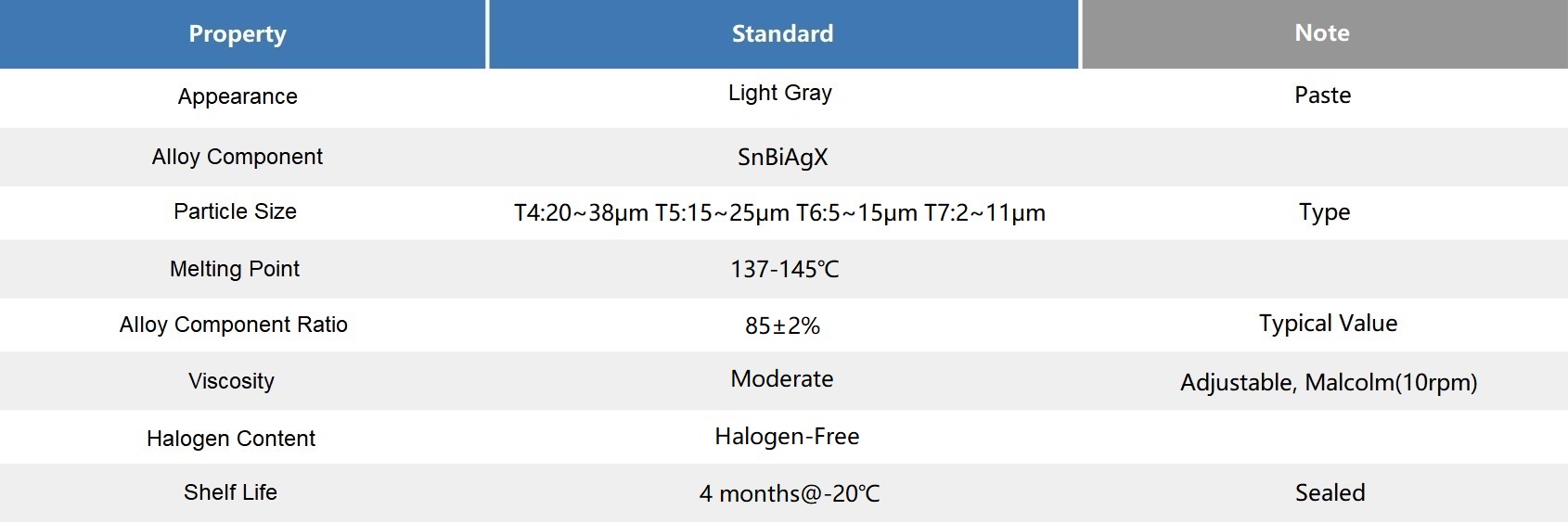

Warming Method: The sealed solder paste should rewarm to room temperature naturally; Rewarm no more than twice.
Warming Time: Rewarm 2 to 3 hours at room temperature. The actual time required to reach thermal equilibrium varies by vessel size.
Note: Do not open the bottle cap without sufficient rewarming or shorten the rewarming time by using heating equipment.
Operating Environment: The best operating temperature and humidity are 20-25°C and 40-60%RH, respectively. Reflow soldering in a nitrogen atmosphere is recommended.
Cleaning Instruction: There is a small amount of residue around the pad after reflow, which should be cleaned with deionized water as soon as possible. The temperature of deionized water is between 25°C and 40°C.
FSA-574P series low-temperature lead-free epoxy solder paste products are made of low-temperature ultra-fine SnBi solder powder and halogen-free flux. Only a tiny amount of solvent evaporates during the soldering and solidification process. There is no solder ball generation after soldering. The solder powder melts and shrinks, and the solder joints are metallurgical connections, which are equivalent to the soldering effect of solder paste. FSA-574P epoxy solder paste is unnecessary to clean. The solder residue becomes thermoset adhesive to reinforce the solder joints and enhance the anti-corrosion and insulation performance. FSA-574P is suitable for the reliable packaging of thin substrates and non-heat-resistance components.
1. Before Curing:
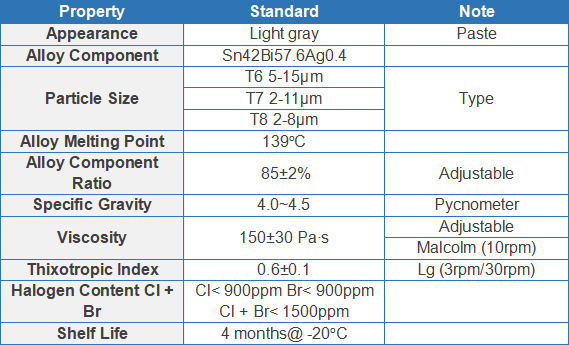
2. After Curing:
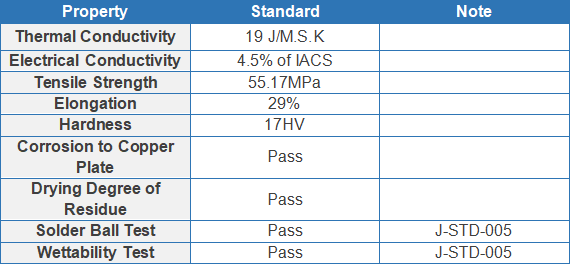
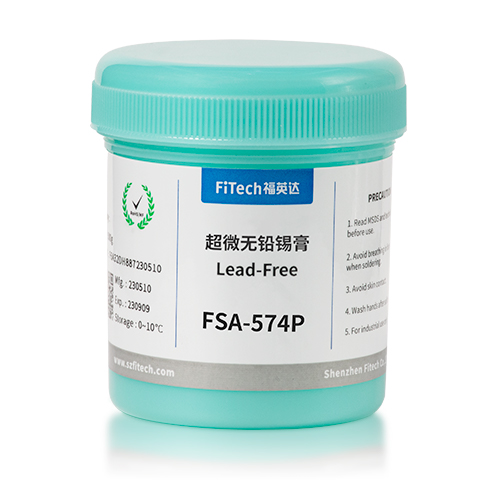
Warming Method: The sealed solder paste should rewarm to room temperature naturally; Rewarm no more than twice.
Warming Time: Rewarm 2 to 3 hours at room temperature. The actual time required to reach thermal equilibrium varies by vessel size.
Note: Do not open the bottle cap without sufficient rewarming or shorten the rewarming time by using heating equipment.
Operation Environment: The best operating temperature and humidity are 20-25°C and 40-50%RH, respectively. Reflow soldering in a nitrogen atmosphere is recommended.
Stencil Cleaning Solvent: Ether. Propylene glycol monomethyl ether (PM) is preferred.
FSA-574D series low-temperature lead-free epoxy solder paste is composed of low-temperature ultra-fine SnBi solder powder and halogen-free flux. Only a tiny amount of solvent evaporates during the soldering and solidification process. There is no solder ball formation after soldering. The solder powder melts and shrinks, and the solder joints are metallurgical connections, which are equivalent to the soldering effects of solder paste. FSA-574D epoxy solder paste is unnecessary to clean. Solder residue becomes thermosetting adhesive to reinforce the solder joints and enhance the anti-corrosion and insulation performance. FSA-574D is suitable for the reliable packaging of thin substrates and non-heat-resistant components.
1. Before Curing:
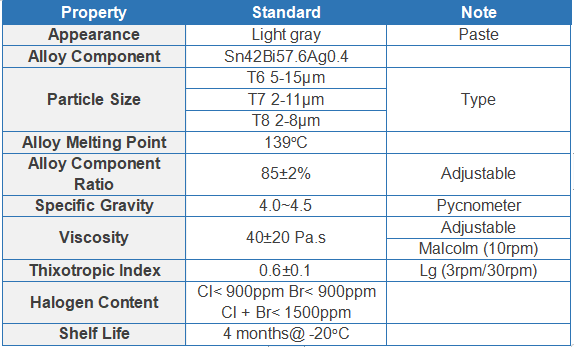
2. After Curing:

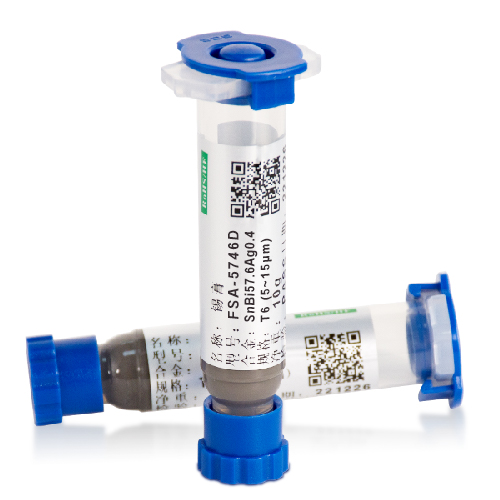
Warming Method: The sealed solder paste should rewarm to room temperature naturally; Rewarm no more than twice.
Warming Time: Rewarm 2 to 3 hours at room temperature. The actual time required to reach thermal equilibrium varies by vessel size.
Note: Do not open the bottle cap without sufficient rewarming or shorten the rewarming time by using heating equipment.
Operating Environment: The best operating temperature and humidity are 20-25°C and 40-50%RH, respectively. Reflow soldering in a nitrogen atmosphere is recommended.
Stencil Cleaning Solvent: Ether. Propylene glycol monomethyl ether (PM) is preferred.
FACA-138D series is a low-temperature metallurgical-bonding halogen-free anisotropic conductive paste (ACP). The main alloy component of FACA-138D is SnBiAg0.4. Fitech classifies solder powders into T8 powder (2-8um), T9 powder (1-5um), and T10 powder (1-3um) based on particle sizes. Solder powder and epoxy-based flux are combined to produce a low-temperature conductive paste.
1. The conductive filler has uniform particle size, and FACA-138D has outstanding dispersion performance;
2. After hot-pressing solidification, the bonding of insulated materials increases soldering reliability;
3. There is no solvent volatilization during the hot-pressing curing process;
4. The hot-pressing temperature is low, and the solder powder melts and metallurgically connects with the pad, enhancing the bonding strength;
5. FACA-138D is an extraordinary anisotropic conductive solder that is longitudinal conductive and non-conductive in the transverse direction.

Before Curing:
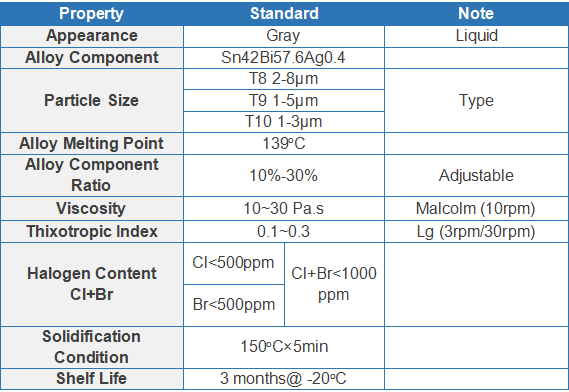

1. Warming Instruction: Solder paste needs to be refrigerated, and the preferred temperature is 0-10℃. When taking out solder paste from the cold box, its temperature is much lower than the room temperature. If the bottle cap opens without rewarming, the water vapor in the air will easily condense and adhere to the solder paste. The high temperature exceeding 150℃ during soldering increases the vaporization rate of water, which may cause the phenomenon of "exploding solder" to produce solder balls and even damage the components.
2. Warming Method: The sealed solder paste should rewarm to room temperature naturally; Rewarm no more than twice.
3. Warming Time: Return to warm for 2 to 3 hours at room temperature. The actual time required to reach thermal equilibrium varies by vessel size.
4. Note: Do not open the bottle cap without sufficient rewarming or shorten the rewarming time by using heat sources.
5. Operating Environment: The best operating temperature and humidity are 20-25°C and 40-60%RH, respectively.







